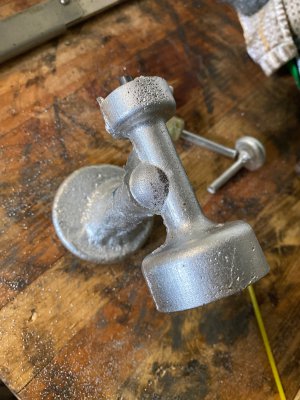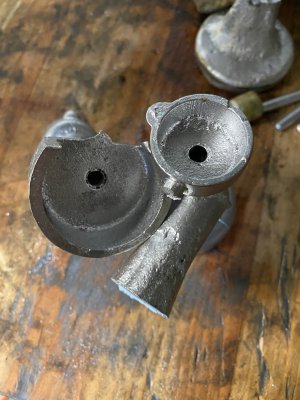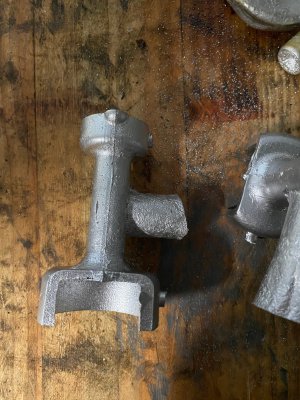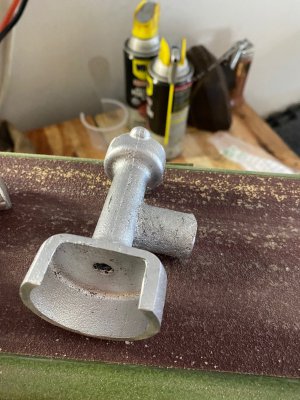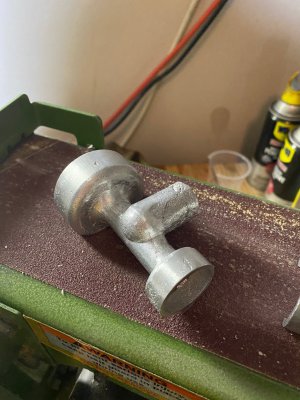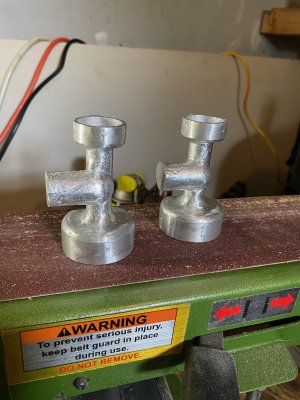- Joined
- May 25, 2016
- Messages
- 181
I had printed myself a South Bend thread dial years ago.
Last year a friend who has access to a NICE 3D printer made me one out of a composite plastic (nylon and carbon fiber I believe), and it works great.
Well that same friend just decided to get into casting, and this was his first project.
I think they are cleaning up nicely. I figured I'd sand blast them once I had them cleaned up, just to get that "cast" texture back.
I'm wondering the best way to finish them. I figure I ream the through hole to 5/16", and then use that for reference to drill the perpendicular mounting hole.
I also am guessing I'll get to use my boring head to clean up the inside of the dial housing.
Any thoughts or suggestions?
I know making an aluminum SB9 thread dial is overkill, but it just seems to go with the lathe. (of course after I painted the plastic/nylon one, you really can't tell it's not stock!
-Tom
Last year a friend who has access to a NICE 3D printer made me one out of a composite plastic (nylon and carbon fiber I believe), and it works great.
Well that same friend just decided to get into casting, and this was his first project.
I think they are cleaning up nicely. I figured I'd sand blast them once I had them cleaned up, just to get that "cast" texture back.
I'm wondering the best way to finish them. I figure I ream the through hole to 5/16", and then use that for reference to drill the perpendicular mounting hole.
I also am guessing I'll get to use my boring head to clean up the inside of the dial housing.
Any thoughts or suggestions?
I know making an aluminum SB9 thread dial is overkill, but it just seems to go with the lathe. (of course after I painted the plastic/nylon one, you really can't tell it's not stock!
-Tom


